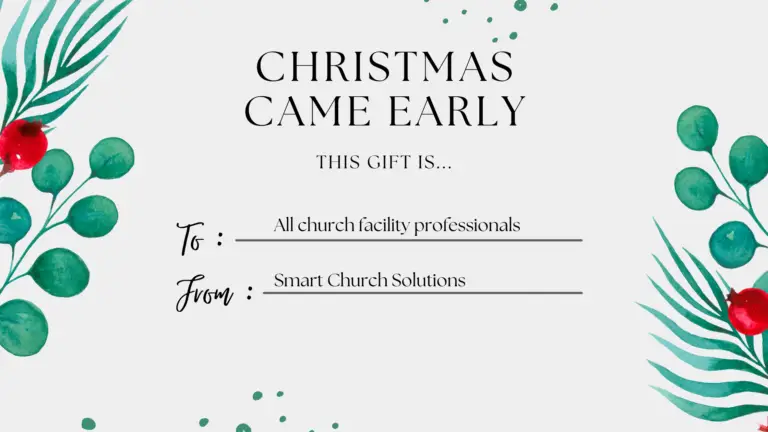Have you ever heard the term “smart building” or “smart house?” Seeing we are in the year 2023, I think it is safe to assume your answer is yes. Therefore, in the paragraphs below, we will explore this concept and how it relates to your church facility.
What Are Smart Buildings?
As you may know, a smart building or house is a structure that utilizes advanced technologies and automation systems to enhance its functionality and efficiency. And, let’s be honest; it also can improve the occupant’s comfort. In your house, think about Google Home or Amazon Alexa — both of these arguably improve efficiency and comfort.
Smart buildings generally incorporate various interconnected devices, sensors, and systems that enhance a building’s operations. Some key features and benefits of smart buildings include the following.
Energy Efficiency
Smart buildings employ energy management systems. These systems help monitor and regulate energy usage, optimizing it for cost savings and environmental sustainability.
Automation and Control
Utilizing centralized control systems or thermostatic (like Pelican, JACE, or BACnet) systems is common in smart buildings. These systems automate and manage various building functions such as lighting, HVAC (heating, ventilation, and air conditioning), security (such as Brivo), and other similar systems.
Data-Driven Insights
Smart buildings collect and analyze data from sensors and devices to gain valuable insights into building performance, occupant behavior, and resource utilization. This information can be used to make informed decisions for better efficiency and comfort. While this is not commonplace in most churches, it will soon be.
Enhanced Occupant Comfort
Smart buildings prioritize occupant comfort. This includes adjusting temperature, lighting, and ventilation based on individual preferences and real-time conditions.
Improved Security and Safety
These types of buildings utilize advanced security systems, surveillance cameras, and access control mechanisms to ensure the safety and security of occupants and assets.
Predictive Maintenance
By monitoring the performance of various building systems, smart buildings can detect potential issues in advance and schedule maintenance activities proactively. In turn, this reduces downtime and costly repairs. Again, this is not “mainstream” in churches. However, the “matrix” is coming, and we will be able to be more efficient in stewarding our ministry facilities.
Sustainability and Environmental Impact
With optimized energy usage, efficient resource management, and data-driven insights, smart buildings contribute to reducing their environmental impact and promoting sustainability.
Seamless Connectivity
Smart buildings provide robust connectivity infrastructure. This enables seamless integration and communication between devices, systems, and occupants.
Flexibility and Adaptability
Smart buildings are designed to accommodate changing needs and can easily adapt to different usage patterns, making them versatile and future-proof.
Cost Savings
Through energy efficiency measures, predictive maintenance, and optimized resource utilization, smart buildings can lead to significant cost savings over time.
Conclusion: Time to Leverage Technology
As we indicated, several of these “smart church” solutions are not household topics. However, remember when the microwave or personal computer was first introduced? Yeah; they were not common, but they are now a staple in our daily lives.
Leveraging technology and data to create more efficient, comfortable, and sustainable environments for our church facilities is not only a choice anymore. It is our responsibility to adopt these enhancements to further steward what God has entrusted to us.
When you have a smart building, you have a smart church. If you would like to learn more about how to leverage technology, reach out to our team today.








